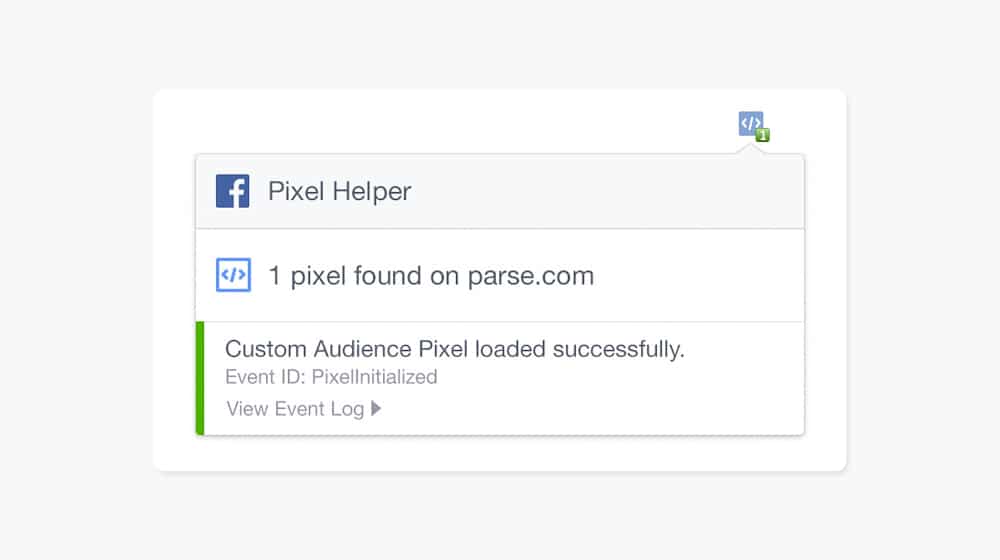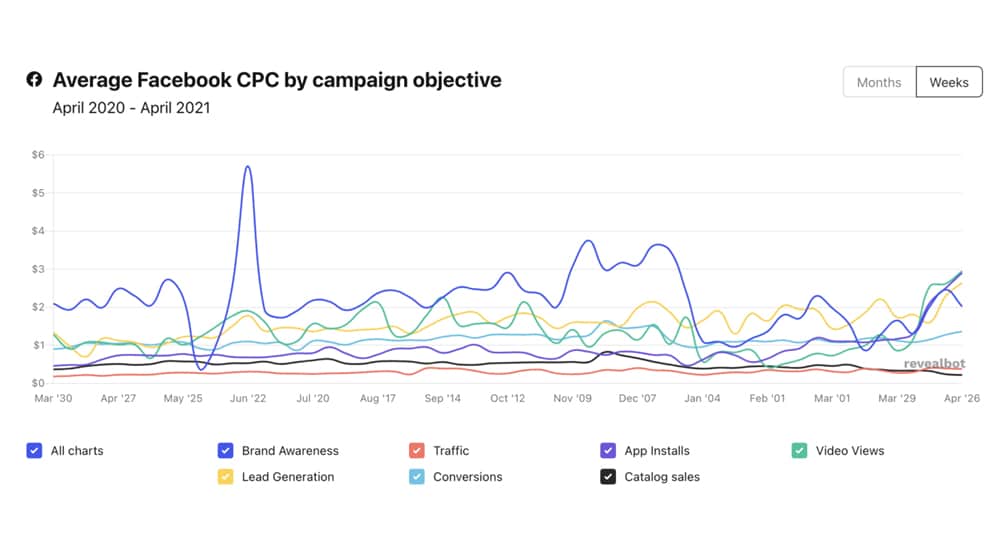How to Accurately Calculate the ROI of Your Facebook Ads

Any time you're spending money as a business, you want to know what benefit it brings you. Sometimes it's obvious; you know your profit from that transaction every time you buy a product to re-sell. Sometimes it's less obvious; spending money on IT services doesn't have an easily trackable return on investment but manifests in a million little things throughout your organization.
Luckily, paid ads tend to be on the more accessible end of the spectrum. You spend money, and you get results. The question is, are you tracking those results properly, or do you not quite know what's going on inside the black box of Facebook advertising?
Understanding ROI
The first thing you need to do is understand what the ROI calculation is. If you're familiar with this sort of terminology already, go ahead and skip this section.
On Facebook, the metric you're calculating is called Return On Ad Spend, or ROAS.

It's a relatively simple calculation:
ROAS = Facebook Ad Revenue / Facebook Ad Spend
So let's say you have a small campaign where you spend $100 on Facebook ads for this week. You measure, and you make $150 in revenue from those ads. (Don't worry; most of the rest of this post is dedicated to figuring out that revenue number if you don't have it.) Thus, your calculation would look like this:
ROAS = Revenue ($150) / Spend ($100) = 1.5x
ROAS, in this case, is the multiplier of money you spend on ads. Your initial money, times 1.5x, is your revenue. Or, to put it differently, in this scenario, it's a 150% return. You can multiply the ROAS number by 100 to get the percentage.
It's a relatively simple calculation; the trick is finding the revenue number to use. Spend is easy; you can view your spending reports in the Facebook ads system or your budget. Revenue, though, that's another story.
Two Types of Returns
The tricky part is that there are two broad categories of businesses that can operate on Facebook ads.
1. The first are businesses that sell products, services, goods, or what have you. When users click on your ads, they end up on a landing page that converts them into customers. They make a payment right away.
Sales (in this scenario) are great! It's easy to tie a click to a conversion to a sale to a revenue number. You have a product that sells for $10. You get 1,000 clicks on your ads, and 100 of those people make purchases. 100 x $10 = $1,000. You spent, say, $250 on those clicks. ROAS then is equal to $1,000/$250, or 4x, or 400%. Simple, bada-bing, bada-boom.

2. The second type of business is somewhat harder to calculate. These businesses generate leads, views, and awareness rather than actual sales with their ads. Sure, you sell products, but you need dedicated phone calls with sales agents to close the deal.
These businesses are a lot harder to measure your return on investment accurately. You have a product that sells for $5,000. You run ads and get 1,000 clicks, and you get 50 leads. Your sales team works those leads. Your sales team closes ten deals, earning your business $50,000. The question is, what was the ROAS for Facebook?
It's impossible to say because those leads might have come from different channels. How many of those phone calls were leads due to your website CTA, from Facebook, or cold calls?
You need to track your data. You need to be able to attach a flag to your leads that says, "this lead came from this channel."
You can do some of this through software, but some of it might need to be done manually. It all depends on how your systems are set up, what software you're using, and how well it all talks to the APIs provided by systems like Facebook.
Tips for Tracking More Data
There are many different options available to you to track more data relating to your ads, and they all provide you with other avenues to match your data with your ad spend. As such, I'm going to run through all of them here.
1. Assigning Value to Leads
Before you get into specific data tracking, you probably want to develop an expected/actual value for your leads.
If you're one of those businesses that sell products and run ads with conversions as their objective, you're good to go. Facebook will tell you what your ad spend is and tell you how many people clicked your ad. You can then use the measures below to make sure you're tracking conversions from the ads, and you'll get your revenue right off.

If you're a business that uses ads to generate leads, however, you're going to have to figure out what a lead is worth to you. You have two options here:
- Assign a value for a lead, even if that lead doesn't result in a sale.
- Implement specific tracking to record the actual value of each lead.
The first option uses "expected value" and is generally a calculation. You take your total sum of all leads, the value of those who convert and divide them by your total leads. For example, if one sale is worth $500, each successful lead is $500. But, if you have a conversion rate of one in ten, that means the value of ten leads is $500, meaning each lead is only worth $50 on average. Expected Value calculations vary over time based on the quality of your ad targeting, your sales team's pitches, and other factors, so it's not usually recommended for this kind of data measurement. Still, it can be helpful to know as an option.
The second option requires more precise data tracking, including tracking which leads came from which channels. This data is valuable information to track (and I'll tell you how later), but it also requires you to maintain that tracking in a way you can calculate. These strategies can be tricky, but they give you much more precise information. Without it, you're essentially working blind.
2. Setting a Time to Measure
Another critical choice to make when you're establishing your data is choosing your timeframe. Are you calculating your return on ad spends for a day, a week, a month, a quarter, or a year?
The reality is that, using analytics platforms, you can get all of this information. You record all of the data points for sales, expenditures, and time and calculate ROAS for all of those periods. You need to make sure you've defined which one you care about before you start crunching numbers, especially if you're comparing efficacy. ROAS from month to month is valuable to know, so you can see what changes you've made have an effect.

Just make sure you have this defined before you start doing the math.
3. Setting Facebook Objectives
First and foremost is making sure that, when you create your Facebook ads, you're choosing the right ad objective. Ad objectives are a definition of what your goal is with the ad. Facebook has a bunch of different objectives ranging from building brand awareness to getting more conversions.

Ad objectives do two main things for you when you choose one for your ads.
- They define the behavior of the ads. Facebook will, behind the scenes, optimize which people see your ads within your target audience based on which ones are most likely to take the relevant action, be it a click or a conversion.
- They set data for different categories of tracking. If you create ads to brand awareness, Facebook will track those ads for impressions and clicks but not for conversions. Similar ads with the conversion objective will track more data relevant to the sales themselves.
You can calculate your return on ad spend regardless; you might want to be aware that choosing the right objective is essential for the success of ads. Brand awareness ads can have conversions, but they may be few and far between because that's not the point of the ad.
4. Using UTM Tracking
Another powerful tool at your disposal is link flags with Google's UTM parameters. UTM parameters are not something Facebook does by default, but you've probably seen them everywhere. They're parameters you can add onto a URL to give Google Analytics (and any other analytics platform that reads them) more data about your links.

UTM parameters are easy to use, but you need to be aware of them to use them. You can't apply them retroactively. Luckily, I wrote a guide on using UTM parameters over here, which you can check out. Just apply what I say there to the URLs you use as landing pages in your Facebook ads.
5. Using the Facebook Pixel
Facebook offers detailed data transfer through analytics if you use the Facebook tracking pixel on your website.
The Facebook tracking pixel is the key to almost all of your ROAS tracking.
It's like Google Analytics for Facebook. It's a piece of code you put on your site to allow Facebook to track Facebook users who leave Facebook.

To create a Facebook tracking pixel:
- Go to the Facebook events manager.
- Click the + on Connect Data Sources and choose Web.
- Choose the Facebook Pixel and connect it.
- Name your pixel (preferably after your website name.)
- Enter your website URL.
From there, you'll need to choose a method to add the pixel to your site. You can do it like Google Analytics, with code you copy and paste, or you can do it with a plugin for WordPress or another partner integration. The result is the same: a new tracking code installed on your website.
Next, you'll want to use the event setup tool to configure the events you want to track. These will be specific, discrete events such as "a user made a purchase" or "a user adds an item to their wishlist." They are specific events you can track for ROAS and other metrics, including lead generation.
Properly configuring events is critical to successfully tracking your data.
Once you have your events set up, you'll want to go into your pixel configuration options within the event manager and assign a monetary value to the events that have it.
6. Create Custom Reporting in Facebook Insights
Within Facebook insights, you'll be able to create a table that calculates your return on ad spend (ROI) automatically, where applicable.
Go to your ads manager dashboard and click on the columns drop-down, and choose "customize columns." Remove/uncheck any metric you don't need, but keep the essentials like Campaign Name, Delivery, Bidding information, Results, and Cost Per Result.

In the "Standard Events" section under conversions, choose the ROAS metrics. Make sure Purchases and ROAS are both checked so you can see both pieces of data individually in your report. Finally, select your report timing. Usually, the past 28 days are an excellent window to measure.
Once you've set up this report and saved it, let your ads run for a month or however long it takes to harvest that data. If you already had most of the data tracking running, the report should back-file data it has, but if you haven't been tracking conversion value or conversions at all, it won't have that data to record.
Nuance in Data Tracking
It's worth mentioning that everything I've written above is barely scratching the surface of the data you can track, manage, and compare within Facebook insights, with the Facebook pixel, and through links with other systems. It's essentially the bare minimum to get valuable data out of your ads. It is, however, meaningful data to track, even if it's simple.

If you have more specific questions, feel free to ask them in the comments below. I can leverage my expertise or do some digging to point you in the right direction. Facebook is very complex and harvests an absolute goldmine of data, but it's tricky to extract what you want from their analytics systems if you're not, well, an analyst in the first place. No shame in needing a little help!










April 08, 2022
It's been difficult for me to navigate through all the data we get from Facebook so this is very much appreciated. Thank you!
April 29, 2022
Hi Maurice,
Not a problem! I'm glad this was useful to you.